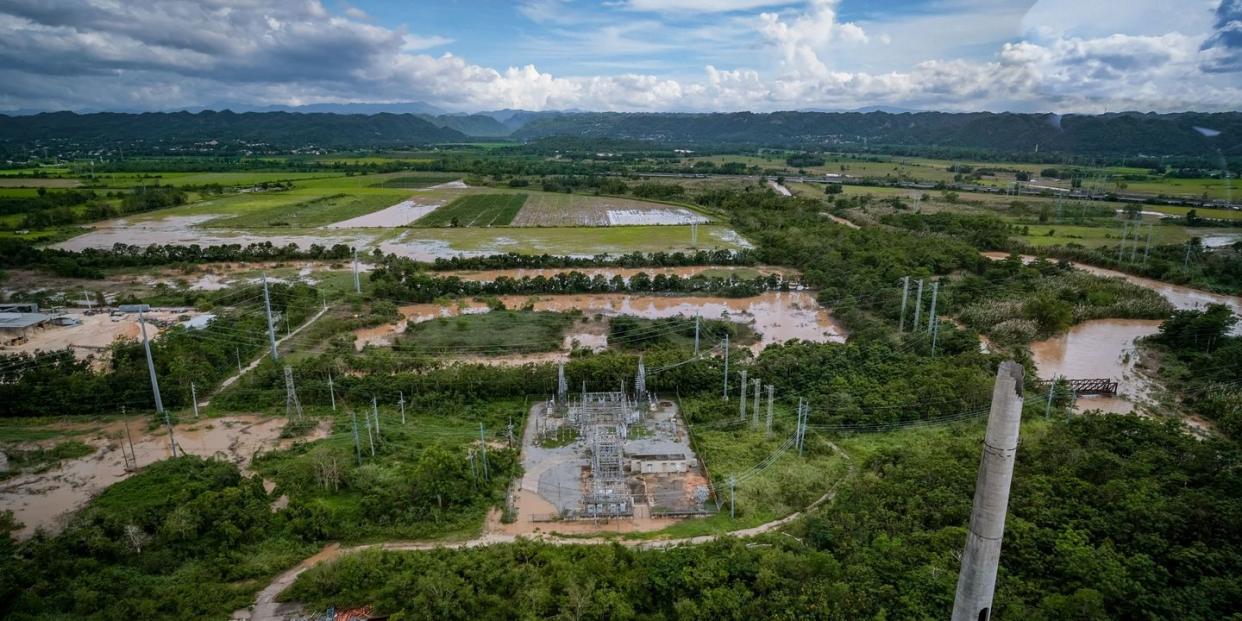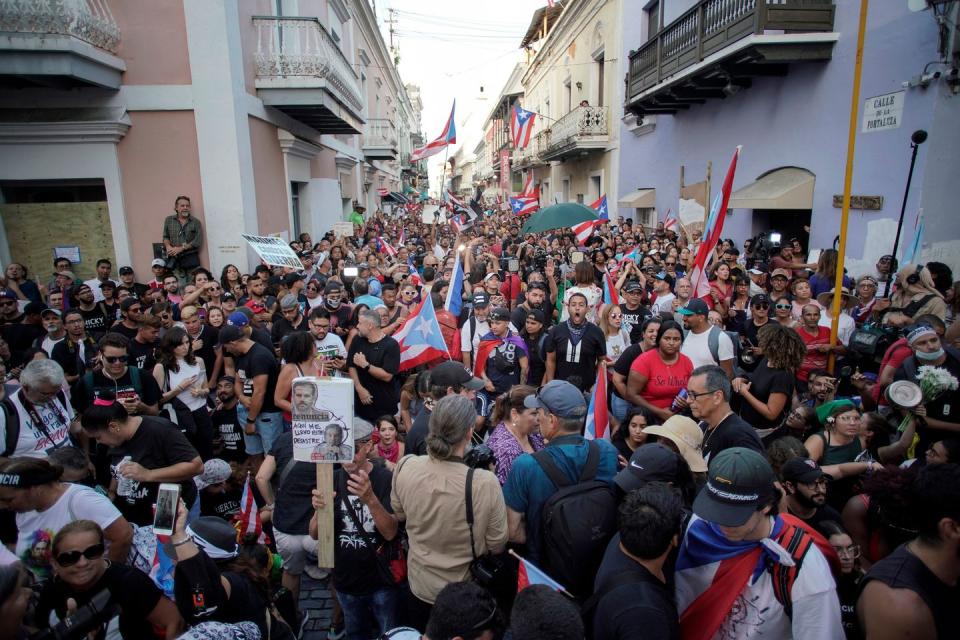Puerto Rico's Power Troubles—Who Has It and How It's Used

Five years ago when Hurricane María, a Category 5 hurricane, battered the island, it left more than 4,000 people dead, destroyed hundreds of thousands of houses, and badly damaged the island’s infrastructure. On Sunday, Hurricane Fiona made landfall in Puerto Rico, knocking out power for the whole island, displacing many from their homes, and battering crops for farmers—rendering much of the recovery efforts moot. More than 70% of the island was still in the dark as of Wednesday, and more than 500,000 people still didn’t have water.
Residents from Puerto Rico’s southern region are reliving the disaster trauma even more intensely. Major earthquakes shook the island in January 2020, heavily damaging dozens of homes in the southwest coastal towns. Disbursing resources to these towns was delayed when the pandemic began a few months later.
But it’s not simply the brutal sequence of these events coming one after the other. Delivery of resources to Puerto Rico has also been unnecessarily slow. The Trump administration delayed more than $20 billion in hurricane relief aid after María. A report by the U.S. Department of Housing and Urban Development’s inspector general found last year that the efforts to deliver funding to the island were “unnecessarily delayed by bureaucratic obstacles.” To date, the Federal Emergency Management Agency has allocated about $13.2 billion (with a B) for the recovery of the electrical grid after Hurricane María hit the island. Only $40 million of those funds have been disbursed in the last five years.
And when it has arrived, the aid hasn’t always been used well. One of the great problems that Puerto Rico has faced throughout these crises has been waste. In one of the more notorious instances, about 20,000 pallets of water bottles shipped to Puerto Rico after Maria were found on a runway, unused and too contaminated to drink a year later.
In addition to the slow aid disbursement and waste, political turmoil has delayed much of the progress for the island’s recovery. In 2019, an investigation by a local news outlet discovered private texts between Gov. Ricardo Rosselló Nevares and his advisors that mocked victims of Hurricane María, women, and the LGBT community. The protest that followed to remove Rosselló Nevares, called #RickyRenuncia, was one of the largest demonstrations ever in the island’s history. His resignation, although welcomed, resulted in disruption and delays.

The government is also making residents pay the price after years of borrowing, resulting in school closures and an island bereft of doctors, teachers, and other professionals. In 2016, Obama administration signed a bill known as PROMESA, a law to help Puerto Rico exit its massive economic crisis after it accumulated more than $70 billion in public debt. The bill also imposed a fiscal board to oversee this process, an entity largely criticized by Puerto Ricans amid rising austerity measures.
Corruption has infected layers of government in the last few years, further diverting the recovery. In 2017, the government granted a $300 million contract to a small Montana company, Whitefish, to help rebuild Puerto Rico's electricity grid after Maria. Allegations of price-gouging and multiple federal inquiries led to the cancellation of the deal, with the power grid no nearer to being rebuilt and many still unsatisfied with the lack of progress.
Now LUMA Energy is at the center of Puerto Ricans’ rage over the management of the island’s grid. Before Fiona hit Puerto Rico on Sunday, several public protests called for the government to cancel its contract with LUMA. Puerto Ricans were already facing frequent power outages before the company’s entry in 2021, but many claim the disruptions have only worsened since then. Home appliances, from refrigerators to televisions, have been damaged by blackouts amid the constant changes in electricity voltage. Last month, dozens of Puerto Ricans dumped their damaged appliances on the street in front of the governor’s mansion to protest the LUMA contract.

While Rosselló Nevares’s resignation was considered a victory—especially among young Puerto Ricans who believe the island’s two main political parties are only a “pick-your-poison” choice every four years—they believe there’s still a long way to go to establish a truly representative government. Younger generations are advocating for the end of this two-party system in Puerto Rico, and have chosen essentially to vote against both parties, which have competed for control of the island over the last decades and have governed during these crises. The 2020 elections proved that. More than 35% of the votes went to parties other than the two historically dominant ones, a huge spike compared to 4.4% in the 2012 elections.
The island’s territorial status remains at the root of political ideologies when residents head to the ballot box. Many Puerto Ricans want to put an end to its colonial status, whether via statehood or independence. U.S. lawmakers recently drafted legislation that proposes a binding plebiscite to determine the island’s status, although the bill is unlikely to pass the Senate. On the island, though, it has renewed conversations about whether to preserve the island's territorial status.
You Might Also Like

